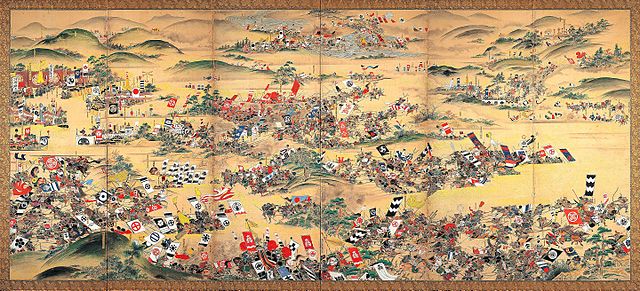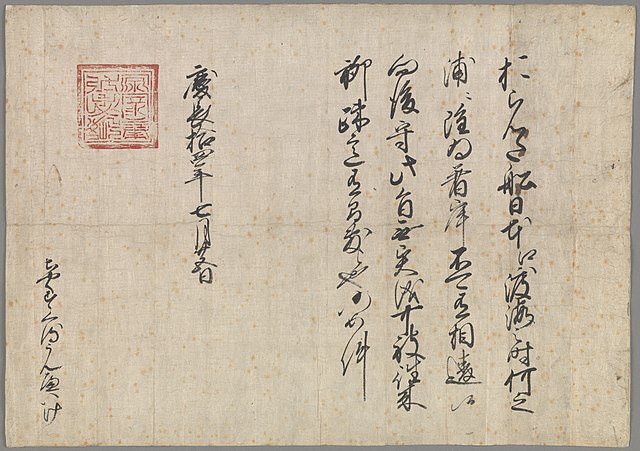The Battle of Sekigahara was a decisive battle on October 21, 1600 in what is now Gifu Prefecture, Japan, at the end of the Sengoku period. This battle was fought by the forces of Tokugawa Ieyasu against a coalition of Toyotomi loyalist clans under Ishida Mitsunari, several of which defected before or during the battle, leading to a Tokugawa victory. The Battle of Sekigahara was the largest battle of Japanese feudal history and is often regarded as the most important. Mitsunari's defeat led to the establishment of the Tokugawa shogunate.
Edo-period screen depicting the battle
Japanese arquebus (Tanegashima) of the Edo era
Edo period screen depicting the Battle of Sekigahara – 160,000 men fought on 21 October 1600.
Sekigahara battlefield memorials, in April 2005
Keichō (慶長) was a Japanese era name after Bunroku and before Genna. This period spanned from October 1596 to July 1615. The reigning emperors were Go-Yōzei-tennō (後陽成天皇) and Go-Mizunoo-tennō (後水尾天皇).
Trading pass issued in the name of Ieyasu Tokugawa, dated August 24, 1609 (Keichō 14, 25th day of the 6th month).
Temple bell at Hōkō-ji.
Inscription on bell at Hokoji in Kyoto
Keichō gold coinage: Ōban, Koban, Ichibuban (1601–1695)








